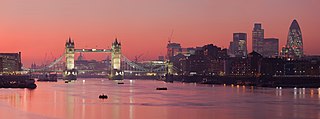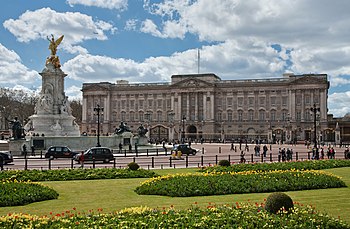
Ten places tourist in england:
1.Big Ben:
Big Ben is the nickname for the great bell of the clock at the north end of the Palace of Westminster in London, and is generally extended to refer to the clock and the clock tower as well. The clock tower holds the largest four-faced chiming clock in the world and is the third-tallest free-standing clock tower. It celebrated its 150th anniversary on 31 May 2009,during which celebratory events took place. The tower was completed in 1858 and has become one of the most prominent symbols of both London and England, often in the establishing shot of films set in the city.
2.London eye:

The London Eye is a giant Ferris wheel situated on the banks of the River Thames in London, England. The entire structure is 135 metres (443 ft) tall and the wheel has a diameter of 120 metres (394 ft).
It is the tallest Ferris wheel in Europe, and the most popular paid tourist attraction in the United Kingdom, visited by over 3.5 million people annually. When erected in 1999 it was the tallest Ferris wheel in the world, until surpassed first by the 160 m (520 ft) Star of Nanchang in 2006 and then the 165 m (541 ft)Singapore Flyer in 2008. It is still described by its operators as "the world's tallest cantilevered observation wheel" (as the wheel is supported by an A-frame on one side only, unlike the Nanchang and Singapore wheels). It is the 20th tallest structure in London.
The London Eye, or Millennium Wheel, was officially called the British Airways London Eye and then the Merlin Entertainments London Eye. Since 20 January 2011, its official name is the EDF Energy London Eye following a three-year sponsorship deal.
The London Eye is located in the London Borough of Lambeth at the western end of Jubilee Gardens, on the South Bank of the River Thames betweenWestminster Bridge and Hungerford Bridge. The site is adjacent to that of the former Dome of Discovery, which was built for the Festival of Britain in 1951.
3.River Thames:

The River Thames flows through southern England. It is the longest river entirely in England and the second longest in the United Kingdom. While it is best known because its lower reaches flow through central London, the river flows alongside several other towns and cities, including Oxford, Reading, Henley-on-Thames, Windsor, Kingston upon Thames and Richmond.
The river gives its name to several geographical and political entities, including the Thames Valley, a region of England around the river between Oxford and west London, the Thames Gateway, the area centred on the tidal Thames, and the Thames Estuary to the east of London. The tidal section of the river is covered in more detail under Tideway.
4.Tower Bridge:

Tower Bridge (built 1886–1894) is a combined bascule and suspension bridge in London, England, over the River Thames. It is close to the Tower of London, from which it takes its name. It has become an iconic symbol of London.
The bridge consists of two towers tied together at the upper level by means of two horizontal walkways, designed to withstand the horizontal forces exerted by the suspended sections of the bridge on the landward sides of the towers. The vertical component of the forces in the suspended sections and the vertical reactions of the two walkways are carried by the two robust towers. The bascule pivots and operating machinery are housed in the base of each tower. The bridge's present colour scheme dates from 1977, when it was painted red, white and blue for the Queen Elizabeth II's silver jubilee. Originally it was painted a mid greenish-blue colour.
Tower Bridge is sometimes mistakenly referred to as London Bridge, which is the next bridge upstream.
The nearest London Underground station is Tower Hill on the Circle and District lines, and the nearest DocklandsLight Railway station is Tower Gateway.
5.Buckingham Palace:

Buckingham Palace is the official London residence and principal workplace of the British monarch. Located in the City of Westminster, the palace is a setting for state occasions and royal hospitality. It has been a focus for the British people at times of national rejoicing and crisis.
Originally known as Buckingham House, the building which forms the core of today's palace was a large townhouse built for the Duke of Buckingham in 1705 on a site which had been in private ownership for at least 150 years. It was subsequently acquired by George III in 1761 as a private residence for Queen Charlotte, and known as "The Queen's House". During the 19th century it was enlarged, principally by architects John Nash and Edward Blore, forming three wings around a central courtyard. Buckingham Palace finally became the official royal palace of the British monarch on the accession of Queen Victoria in 1837. The last major structural additions were made in the late 19th and early 20th centuries, including the East front which contains the well-known balcony on which the royal family traditionally congregate to greet crowds outside. However, the palace chapel was destroyed by a German bomb in World War II; the Queen's Gallery was built on the site and opened to the public in 1962 to exhibit works of art from the Royal Collection.
6.British Museum:

The British Museum, in London, is widely considered to be one of the world's greatest museums of human history and culture. Its permanent collection, numbering some eight million works, is amongst the finest, most comprehensive, and largest in existence and originates from all continents, illustrating and documenting the story of human culture from its beginnings to the present.
The British Museum was established in 1753, largely based on the collections of the physician and scientist Sir Hans Sloane. The museum first opened to the public on 15 January 1759 in Montagu House in Bloomsbury, on the site of the current museum building. Its expansion over the following two and a half centuries was largely a result of an expanding British colonial footprint and has resulted in the creation of several branch institutions, the first being the British Museum (Natural History) in South Kensington in 1887. Some objects in the collection, most notably the Elgin Marbles from the Parthenon, are the objects of intense controversy and of calls for restitution to their countries of origin.
7.St Paul's Cathedral:

St Paul's Cathedral, London, is a Church of England cathedral and seat of the Bishop of London. Its dedication to Paul the Apostle dates back to the original church on this site, founded in AD 604. St Paul's sits at the top of Ludgate Hill, the highest point in the City of London, and is the mother church of theDiocese of London. The present church dating from the late 17th century was built to an English Baroque design of Sir Christopher Wren, as part of a major rebuilding program which took place in the city after the Great Fire of London, and was completed within his lifetime.
The cathedral is one of the most famous and most recognisable sights of London, with its dome, framed by the spires of Wren's City churches, dominating the skyline for 300 years. At 365 feet (111 m) high, it was the tallest building in London from 1710 to 1962, and its dome is also among the highest in the world. In terms of area, St Paul's is the second largest church building in the United Kingdom after Liverpool Cathedral.
8.Regent's Park:

The park has an outer ring road called the Outer Circle (4.3 km) and an inner ring road called the Inner Circle, which surrounds the most carefully tended section of the park, Queen Mary's Gardens. Apart from two link roads between these two, the park is reserved for pedestrians. The south, east and most of the west side of the park are lined with elegant white stucco terraces of houses designed by John Nash. Running through the northern end of the park isRegent's Canal which connects the Grand Union Canal to the former London docks.
The 166 hectares (410 acres) park is mainly open parkland which enjoys a wide range of facilities and amenities including gardens, a lake with a heronry,waterfowl and a boating area, sports pitches, and children's playgrounds. The northern side of the park is the home of London Zoo and the headquarters of the Zoological Society of London. There are several public gardens with flowers and specimen plants, including Queen Mary's Gardens in the Inner Circle, in which the Open Air Theatre is located; the formal Italian Gardens and adjacent informal English Gardens in the south-east corner of the park; and the gardens of St John's Lodge. Winfield House, the official residence of the U.S. Ambassador to the United Kingdom, stands in private grounds in the western section of the park. Nearby is the domed London Central Mosque, better known as Regent's Park mosque, a highly visible landmark.
9.Picadilly Circus:

Piccadilly Circus is a road junction and public space of London's West End in the City of Westminster, built in 1819 to connect Regent Street with the major shopping street of Piccadilly. In this context, a circus, from the Latin word meaning "circle", is a round open space at a street junction. Coordinates: 51°30′36″N 0°8′4″W
Piccadilly now links directly to the theatres on Shaftesbury Avenue, as well as the Haymarket, Coventry Street (onwards to Leicester Square), and Glasshouse Street. The Circus is close to major shopping and entertainment areas in the West End. Its status as a major traffic intersection has made Piccadilly Circus a busy meeting place and a tourist attraction in its own right. The Circus is particularly known for its video display and neon signs mounted on the corner building on the northern side, as well as the Shaftesbury memorial fountain and statue of an archer popularly known as Eros(sometimes called The Angel of Christian Charity, but intended to be Anteros). It is surrounded by several noted buildings, including the London Pavilion and Criterion Theatre. Directly underneath the plaza is Piccadilly Circus tube station, part of the London Underground system.
10.Covent Garden:

Covent Garden is a district in London on the eastern fringes of the West End, between St. Martin's Lane and Drury Lane. It is associated with the former fruit and vegetable market in the central square, now a popular shopping and tourist site, and the Royal Opera House, which is also known as "Covent Garden". The district is divided by the main thoroughfare of Long Acre, north of which is given over to independent shops centred on Neal's Yard and Seven Dials, while the south contains the central square with its street performers and most of the elegant buildings, theatres and entertainment facilities, including theTheatre Royal, Drury Lane, and the London Transport Museum.
Though mainly fields until the 16th century, the area was briefly settled when it became the heart of the Anglo-Saxon trading town of Lundenwic. After the town was abandoned, part of the area was walled off by 1200 for use as arable land and orchards by Westminster Abbey, and was referred to as "the garden of the Abbey and Convent". The land, now called "the Covent Garden", was seized by Henry VIII, and granted to the Earls of Bedford in 1552. The 4th Earlcommissioned Inigo Jones to build some fine houses to attract wealthy tenants. Jones designed the Italianate arcaded square along with the church of St Paul's. The design of the square was new to London, and had a significant influence on modern town planning, acting as the prototype for the laying-out of new estates as London grew.
